Replacement Trailer Hub Bearing - LM48548

- All Info
- Reviews (23)
- Q & A (0)
- Videos (2)
- Photos
TruRyde Trailer Bearings Races Seals Caps - LM48548
- Bearings
- Standard Bearings
- 2500 lbs Axle
- Bearing LM48548
- 1.375 Inch I.D.
- TruRyde
- Race LM48510
High-quality, tapered roller bearing. Replacement part uses industry-standard number.
Features:
- Inner diameter: 1.375"
- Matching race (sold separately): LM48510
- Application: inner bearing for AH25555F agricultural hub
LM48548 Replacement Bearing
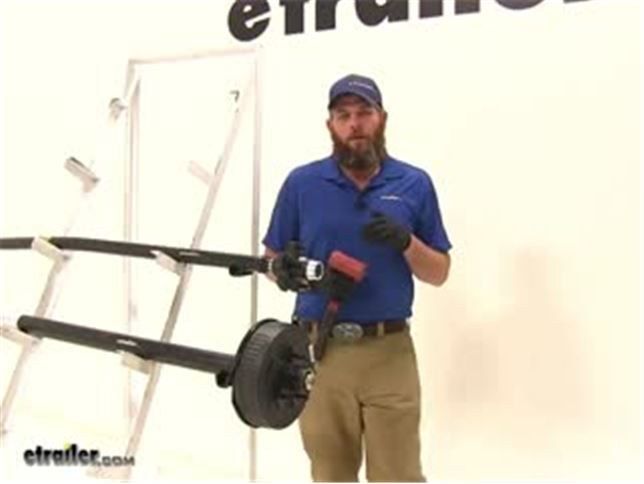

Videos are provided as a guide only. Refer to manufacturer installation instructions and specs for complete information.
Video Transcript for Trailer Bearings Races Seals and Caps Rebuild
Speaker 1: Today we're going to take you through the rebuild process on a couple of hubs. We've got an idler hub, and here we've got a hub and drum assembly. Works with electric rigs, but this can also work for just standard discs, if you've got a disc brake style setup.Basically what we're going to show you is how to get all of the bearings out. How to remove the seal. How to remove the race's if they're damaged, then get them replaced in the proper manner. We'll show you how to use an easy loop hub, which we have here.The first thing we are going to need to do is, get the grease cap off the end.
It can have either a rubber plug in it like this one does, or it can be a solid metal cap.These are pressed fit in there, basically by tapping on them on the back side. To remove them, a deadbolt hammer is typically what we're going to use. We're just going to start tapping as we go around. You'll see a little separation start right here, and slowly it'll work it's way off.Now the next step's going to vary a little bit depending on your axle setup. Do you see this is going to have a keeper that goes around the nut.
And that prevents that from being backed off, or removed. A lot of times you'll have a castle nut, which will have just little tabs that stick off, and there will be a cotter pin that passes through it. Just depending on your application, you need to get the keeper for the nut off. This style we just kind of pry out. A cotter pin you would just remove of course.Once we have that off ...
We'll start to take off the nut here, and the washer that's in behind it. Now yours should look a whole lot more dirty than this. There should be a lot of grease packed in, and through the hub, this one's brand new. We thought it'd be nice to show you the components before the grease was on .. Of our washer that comes off.And then here we're going to have our outer bearing.
Continue to pull that. We're gonig to have our inner bearing here. That sits in the backside of the hub. And we didn't put it in yet, we will show you how to put it in. But a seal would typically be covering the backside here. We'll show you how to use a seal removal tool, or another tool. To get that pried up and out. To get an access to that inner bearing.Now for a drum style like this, that process for disassembly is going to be just the same. One thing to keep in mind if you're using a disc brake setup. You'll have to remove the caliper before the disc is going to come off.Now once we have the spindle exposed, as we said this is going to be really greasy. We want to get all the grease removed, and the first thing we'll do is inspect it. We want to make sure that it looks just like what we have here. Everything's nice and smooth. We don't see any kind of discoloration, or any marring on the metal. Indicating that our bearing's got hot.If you do have any of those symptoms, at this point it's time to replace those bearings. You don't want to repack them. Get new bearings, and put in there. You might have a bearing that's come apart in here. Another surface to ensure is in good condition, is where your seal is going to go. That helps seal all the grease inside of our hub. With a damaged or broken seal, that grease is going to seep out. Either out of the hub, or in this case into our brake assembly.Now if your axle has brakes, we're also going to check the disc. Make sure it doesn't have any issues, or your hub. And this is going to be a hub and drum assembly. The brakes are going to ride on this machine surface. You're going to check that for signs of excessive heat, discoloration, or cracking. And this is our magnet surface. We'll check that surface for the same issues.Now inside the hub regardless if it's a disc brake, it's a drum brake like this. Or just a standard idler style hub. You're going to have an outer race. Would be right here, it's a small tapered piece of metal your bearing sits in, and rotates on. That's basically the outer portion of the bearing.You have the same thing here on the backside. This is called the inner race. Now if those show any signs of wear, overheating, or cracking. Those are also something we'll need to replace, which we'll show you how to do in just a minute.Now, with your brake assembly exposed, if you do have electric brakes like we have here. It's a good idea to check all the components for wear, cracking, maybe missing pieces. Check your pad thickness to make sure those are in good shape. Basically if you have a non working brake assembly and you put everything back together, you're just going to have to take it apart and do it all over again to get back to the brake assembly. This gives you a really good option to be able to change them out.And most applications are going to use a four, or maybe a five bolt flange to hold them in place. And you'll just remove the lock nuts, or sometimes you'll have a hex nut with a lock washer. You want to remove those, and then simply slide your assembly off after you cut the wiring.The friction material itself should also be checked for any kinds of cracking, or overheating. If you have any grease inside the system at all, it's likely it's gotten on those pads. It's a good idea to get those changed. Now as far as the removal of the races go, it's going to be just the same whether we're using an idler style hub like we have here. A drum brake like we have here. You can basically see where the idler is, here in the middle of the hub. It's going to go all the way around there, and we just have this extra material here to provide our braking surface.Now if you're doing a disc brake style job again, it's going to be just the same here with the races living inside of the actual hub portion. You'll just have the discs there for the brakes to make contact. We're going to use this little bit smaller one, it's a little bit easier to manage to show you how to get these out. We've talked about where the races are. The outer here, the inner being closer to the inside, but on the backside of the race there's a little lip. That lip's meant to stick out just a little bit further than the hub, and provide us an area to put our tool on, and help to drive that out.If you look all the way through there on that inner race, you'll see that little lip that sticks out just from the hub slightly, and it gives us enough area to use our tool on. Now generally to remove these you're going to use a punch, similar to this. Some guys will use a screwdriver. Or a piece of pipe. If you have a piece of pipe that's small enough to fit inside of that diameter, you can take that down through and allow it to rest on that lip.Use our punch, and then just need a hammer. And we'll start working that out. We're going to tap all the way around. Kind of equally, and evenly apply the force to get it to come on out of the bottom for us.You can see now as it starts to come out there's going to be a little gap created between the hub and the race. And we can just keep going, bringing it on out. Then you can inspect the inside of the hub surface there. Make sure no damage or anything has occurred, and repeat that same process for the outer race if you plan on removing and replacing that one.Now in the outer flat edge, you can see we're going to have our tapered edge on this side. If we roll our race over to the flat side, typically there's going to be a manufacturers part number on there. That will help you identify which race it is, that you need to go back in your system. If those are rubbed off, worn off, if you can't read them. You can measure the outside, to outside diameter of the race here. It's a good idea to use a micrometer to get it exact.Now here's your basic micrometer. And again, the outside of the race is what we're going to need to measure. You want to go . I set the thickest point there. Looks like this one's going to be about 1.98. That's going to be the measurement you'll want to supply.Now while we've got this out, let's also look at the proper way to measure our bearing. Instead of the outside for the bearing, we need to measure the inside diameter. That's going to be pretty simple. Let's pull that out, find the largest measurement we can. Which here, looks like it's going to be 1.03. With that information, we'll be able to get the correct bearing, and the correct race, so they'll fit together properly and make a full bearing kit for us.Now here's the race, we're going to show you how to get this put back in. Basically just going to press fit inside of our hubs. We need to get it down on there. Kind of like that. And you'll have a couple options. A lot of times you're going to see do it yourself or at homer, just going to use a wooden block. Just place it on there. That's going to get you started, but at that point you'll struggle in getting it to go all the way down into it's seat.Now to take care of that problem, there are several seal drivers that are available. Seal and race drivers that are available out there on the market. It's designed to fit down inside of our race, inside of our hub and get it down there where it needs to go. This is part number ptw83020, has several different sizes, even if you have multiple trailers it's going to do the job.Now the side with the angle on it, is designed to fit down inside of our race. If we use the other side, that's going to be for driving your seal into place. Just want to hold it, and take it on in with your hammer. You'll see, you just want to insure that our race is all the way up against that line on the hub where it's supposed to mate to.Now when it comes time to pack your bearings you're going to have several different ways of doing this. You can just use your hand, is the traditional method. That's going to be the method probably reserved for the very occasional trailer work kind of situation. If you do it once or twice a year, probably get away with it that way.Next you would go to a, kind of a sandwich funnel style almost. If you look inside of there, you can see the bearing. It's located between the two pieces. Just use a grease gun. Start filling that with grease, and that's going to fill our bearing for us. And the third, with this one you're just going to place your bearing down and in. It should be pretty close to center. And then we've got our cone her that's going to go down and secure that.Now I think this style, wastes a little bit more grease than what this style will. This has a dust cap. You can see, you can keep your grease in there, put your dust cap on there and save it for later use. This will be if your going to do it every couple years. And this particular style would be if you're a more regular user.Let's start by showing you how to use a bearing packer. Similar to this. Again, we've just got our grease inaudible 00:11:07 here on the top. And then just slowly start to fill it. Now I like this style quite a bit. I think even regular users might enjoy it, because you can get a really quick visual look at that bearing. You're not going to have to overdo it, or have to much grease.You can kind of see in there now, we're starting to get grease to come out of it. Couple more pumps, we'll be good. You can see we've got grease coming out all the way around. Where all of our bearings are. Got a little bit of excess there. Just take that around the outside of it. And then we should be able to lift it off. And now you can see what we we're talking about. Just a little bit of excess there, that you're just going to wind up wasting.Now we'll take our bearing, we're going to place it right down in our race. And then we'll cap off the back with our seal. Right now our seal's going to fit in just like our race did. It's going to have a little bit of a pressure fit to it. Now very often in this situation, I see people using the four by four method. Kind of here, just placing that on and tapping it. As an option though, if you do have one of these. You can see that's designed to fit right on the top of the seal. And help drive it in.The biggest thing here is, just going to be getting it driven in squarely. You can see, this side's in a little bit further than this side. I'm going to start this side first. Now since we didn't have the opportunity to show you before, we're going to take a look at pulling a seal. Now this is a seal puller, we carry this on our website part number ptw1219. This is meant to hook underneath the seal. And then you kind of pull up on it, and just like our race you'll have to work all the way around that edge. Just bringing it out a little at a time.If you don't have that available. Another option would be a screwdriver. You just kind of get that under the seal, and turn it. And see, that'll allow you to also pop that out. We've taken care of our race. Our inner bearing. Our seal. The last component, before we put our hub back in place is going to be our outer bearing. Now with this bearing, I'll show you the hand packing method.This is definitely . Slightly dirtier method than the bearing packer. When we get grease on our hand we want to look at the larger side of the bearing. This is the smaller side. We have a larger side In between the inside and outside there's a gap. We can see our rollers in there. We want to grab that, and use that gap and shove grease inside of it. Now this is going to take a little bit, you want to work in the same spot until you get the grease pushed all the way through. We can see on the top there we've got a little bit starting to come through.And once we push it in the bottom, and you see it start coming out the of the top in those little drips, it's going to indicate that, that section's fully packed. Just need to work all the way around their outside edge now and do the same thing. Alright, once that's all the way around . The bearing will be ready for use.Now one more thing I like to do. We can see our inner bearing there, and our outer bearing. Well between the two, got a pretty big gap in there. If you'll take a . Pretty good amount of grease. We're just going to go all the way around. See how we can go all the way around the inside and just line that really well. The more grease we have in here, the less chance we have of any moisture getting in there, which can cause corrosion, rust, pitting. Pretty much things we do not like when it comes to bearings, races, and hubs.Put plenty of grease in there. And then this one does have the easy lube spindle, that'll even fill it in more. Now we can get our assembly slid on. I like to keep my thumbs on that outer bearing, just to prevent it from . inaudible 00:15:28 pushed off there. Now we can put on the original hardware that we removed, in taking off our hub the first time. In our case, we had our washer and our nut.Now most commonly you'll see pliers similar to this being used. We basically want to get that tightened down. Once it's fully tightened down you'll feel some resistance in the hub. We back it off just slightly. That'll give us a little bit more freedom of motion there. Something you don't want however . Is any movement in, or out on your hub. You want to be sure that everything is compressed, and you don't have what's called end play. Which would be the play in and out.Once we've got that set, then you'll put on whatever tight keeper yours came with. Get that put back in place. Now with an easy lube style hub, you're going to place your grease gun on the end, and then you can just fill the remainder of that hub up.Now for your typical applications, you're either going to have a solid cap, or a cap that'll have a rubber plug in it. A solid cap's going to be for an axle without the grease inaudible 00:16:51 here on the end. Goes on there. Just knock it on with your rubber mallet. Same with the one with the plug. Just gives you a removable area there, be able to cap that off.We'll show you how to put that on. Now as alternatives as well, a lot of times on boat trailers and marine kind of situations. You'll see a bearing buddy. This is going to apply a little bit of pressure on the grease, you'll fill it up. This kind of comes out just a little bit. That applies constant pressure on the grease to make sure we don't have any air, or anything like that. Then there is also an oil bath hub available. Now this is going to be for use with seals that are going to be designed specifically for oil bath use. You'll have to change that seal.We're using a double lip seal. There are also single lip seals available. Of course a double lip seal is going to give you just a little additional security. Keep that in mind when you order. But let's get this knocked on there now so you can see how that works. We just want to take the cap, we're going to center it. This is going to be very similar to what we did with the seal. And then just gently start tapping it around the outside. And it'll seep down on there for you.It's really going to be the same thing that you'll do with any of the end caps. Now with this side done, it's a good idea to take care of all the other hubs. Get them all on the same maintenance schedule. And as long as you'll periodically check the grease, take your trailer out for a trip occasionally. Just to keep everything lubricated. It should extend the life of these parts, and give us years of good service.
Customer Satisfaction Score:
98% were satisfied with this product
2% of customers were not satisfied
- Arrived Damaged
- Wrong item was ordered
- etrailer mistake
Customer Reviews
Replacement Trailer Hub Bearing - LM48548 - LM48548
Average Customer Rating: 4.8 out of 5 stars (23 Customer Reviews)
High-quality, tapered roller bearing. Replacement part uses industry-standard number.Again how much can I say about bearings?
After traveling almost 6500 miles with these on my 1969 Yellowstone Camper, they still are good and no problems
I replaced all the bearings races seals and brakes on a small travel trailer. Bill P.at etrailer took my order and three days later I had everything in my hands. Great job Bill ! All the parts were exact replacements and the install went very smooth. There is video help on their website to show how to make the install easier. I have been dealing with etrailer for several years and have never had a bad experience. I was completely blown away by the pre assembled brakes . Backing plate, shoes, actuators, self adjusters and wiring all ready to bolt on. How much easier can it be? With the best prices, fast shipping and great help on line etrailer is the way to go.
This was an order for replacement 40+ year old wheel bearing parts that had no identifying parts numbers. It was very hard to mach up, but etrailer provided enough information for me to locate the right parts.
The parts were deliver quickly with great communication and fit perfectly!
Thanks
bearings and seals all were fine. THANK YOU FOR YOUR SERVICE , Jay-
good bearings I use them in off road highly abused environment and replace annually as preventative maintenance have never had one fail
Everything looks excellent. Adam did a super job putting together this package. I will be buying from etrailer again. Thanks Louis
It was delivered very fast!!! I got my bearings in 24 hours!!!
Thank you Amanda! The only thing I would suggest is that they should be packaged a little better, individually. They were all in a baggie inside the box. Other than that...very happy.

So far so good!

You guys are FAST, not half fast like other dealers!
Crap.
good
Everything went awesome. I am not used to that. Thanks.
See what our Experts say about this TruRyde Trailer Bearings Races Seals Caps
- Is There A Direct 5 On 4.75 Bolt Pattern Drum To Replace An Older Dexter 8-147 DrumI have had a few of the older Dexter 8-147 hubs pop up recently and we definitely have all the parts needed to do an overhauling of the internal parts. I have all these listed below, but with this having a unique bearing combination, there will not be a direct replacement hub available. In order to switch to a hub/drum with the 5 on 4-3/4 bolt pattern, like the # AKHD-5475-35-K, you will either need to replace the axle, or cut off your current spindles and replace them with the TruRyde...
view full answer... - Is There A Bearing Replacement Kit Available For A 8-147 Dexter HubThough we do indeed have the bearings and seals needed, they are not a common pairing. With that being said, we do not have them put together as a kit, unfortunately. If you needed any other confirmation of parts that will fit your Dexter 8-147 hub though, I do have the inner and out bearings, their races, and the seal listed below. Grease Seal - Double Lip - ID 1.719" / OD 2.565" - for 3,500-lb Axles # 58846 Replacement Trailer Hub Bearing - LM48548 # LM48548 Replacement Race for LM48548...
view full answer... - Determining Capacity of Unknown AxleAccording to my online research, your axles are old Dexters with a capacity of 3500 lbs apiece. I would recommend confirming this by checking the reference numbers on your bearings. The inner bearings should be # LM48548, outer bearing should be # L44649 and the grease seal should be # 58846. If these reference numbers match up, you have confirmed the capacity. Replacement bearings and seals are available should you need them, but I could not find a hub.
view full answer... - Solution for Needing Replacement Hub with Bearings 12649 48548Although we do have the # LM48548 bearing, the M12649 bearing and 20515 seal are not something that we carry. If you only need the bearings and seal it looks like they're still available just not here at etrailer. If you need to replace the hub then your only option will be to replace the axle since that bearing combination is no longer used. For a replacement axle you will need the capacity and the length of the axle. The length is the hub face to hub face measurement. I have attached...
view full answer... - Hubs To Replace Damaged Hubs With Obsolete LM48548 and L44649 Bearing CombinationI have a few options for you, but there is not a replacement hub made any more that has the # LM48548 inner bearing and # L44649 outer bearing that your spindle uses. The # L44610 you mentioned is actually a race and not an actual bearing. Option one is replacing the bearings with # LM48548, # L44649, and races with # LM48510 and # L44610. For the grease seal you will need to use digital calipers like # PTW80157 to precisely measure your spindle and hub in the locations shown in the included...
view full answer... - Replacement Hub Needed for Older Trailer Axle with M12649 and LM48548 BearingsWhile we do carry a replacement for your LM48548 bearing, listed as part # LM48548 on our site, none of our hubs use this bearing and from what I'm seeing your bearing combination is for very old trailer axles. I recommend swapping out your axle to something more current that you'll be able to easily find service parts for, like bearings. To choose the correct replacement axle we'll need to find out the weight rating of your current axle as well as the spring-center and hub-face dimensions. For...
view full answer... - Replacement Bearings L44649, LM48549 and Grease Seal With 1.71 Inner DiameterThanks so much for that detailed info, and we do have the bearings, races, and grease seal that you need, which are the following: - Replacement Trailer Hub Bearing # L44649 - Replacement Race # L44610 - Replacement Trailer Hub Bearing # LM48548 - Replacement Race # LM48510 - Grease Seal # 58846 The bearing LM48548 is a different number than the one you mentioned for the Bower inner bearing, but it does have the exact same inner and outer diameter so it will work perfectly. Apart from...
view full answer... - Are Trailer Bearings L44649 and LM48548 the SameThe bearings part # L44649 and # LM48548 are not interchangeable. But since we carry both we have solutions for replacing both of them. If the races are good I would not mess with changing them. I attached a help article on adding e-brakes to a trailer as well.
view full answer... - Replacement Bearings and Seal for Old Dexter 3500 lb AxleWe don't have a kit for the bearings and seal you mentioned, but we do have the bearings and seal individually (we don't make the kits in house). The parts you want are: Replacement Trailer Hub Bearing # LM48548 Replacement Trailer Hub Bearing # L44649 Grease Seal - Double Lip - ID 1.719" / OD 2.565" - for 3,500-lb Axles # 58846
view full answer... - Replacement Hub Parts For Boat Trailer With 2200 Lb Weight CapacityWe do carry one of the bearings you said you need for your boat trailer. The replacement trailer hub bearing is part # LM48548. This bearing has a 1.375 inch diameter and the outside diameter of the bearing is 2.563 inches diameter. The matching race for this bearing is part # LM48510. We do not have replacement parts for the second bearing you mentioned. I was not able to find a reference to that number in any of the bearing kits we offer. To make sure you get the correct parts you...
view full answer... - Is the Bearing # LM48548 the same as the Bearing # LM4848-NYes, the Bearing # LM48548 that your referenced is the same as the bearing # LM48548-N that is in your trailer.
view full answer... - Carlisle Electric Over Hydraulic Actuator Recommendation for Converting a Trailer With Surge BrakesI have a solution for you that you maybe didn't think of, but I checked the bearing numbers you gave and could not find any replacement hubs that match with both of those bearings. I would recommend you convert your trailer to electric-over-hydraulic brakes. Basically you will replace your surge actuator with an electric over hydraulic actuator and a hydraulic pump that is controlled by a brake controller will apply the hydraulic brakes of your trailer. EOH braking systems are literally...
view full answer... - Bearing Kit for a 2016 Shorelandr Boat TrailerI don't have the ability to cross-reference the bearings in your Shorelandr trailer. However, based on the parts list you gave from their site that I can't repost, the 1-3/8 inch bearing is the Replacement Trailer Hub Bearing # LM48548 the 1-1/16 inch bearing is the Replacement Trailer Hub Bearing # L44649 and then the Bearing Buddy grease seal set # BB60005. I've attached a diagram to help with the specific measuring of a spindle to ensure fit. I recommend using a digital caliper.
view full answer... - Replacement for Bearing LM48548 and Grease Seal 10-4Grease Seal # RG06-050 has an inner diameter of 1.719" and outer diameter of 2.565", you mentioned you have grease seal 10-4 and it has a width of .5" but from my research it looks like a 10-4 seal has an inner diameter of 1.249" and outer diameter of 1.983". I strongly recommend using a digital caliper such as # PTW80157 to measure the seal, as well as your spindle where the seal rides in order to get the correct replacement. If it does have an inner diameter of 1.249" and outer diameter...
view full answer... - Available Replacement Trailer Axle KitsTo use new hubs on your existing trailer spindles the new hubs need to use the same bearings. Either bearing part numbers or dimensions such as what you provided (thank you) will allow you to confirm a proper fit. I checked all bearings we offer for ones that have the same (or very close to the) spindle diameters you provided. Bearing # LM48548 has an inner diameter of 1.375-inches so it will fit at the spindle where it measures 1.370-inches. For the outer bearing spindle dimension of...
view full answer... - Recommended Replacements for an Older Trailer HubHaving an inner bearing # LM48548 and outer bearing # LM11949 is definitely going to make things a bit difficult. I went through all the hub options we have available, but none will match your set up, unfortunately. That being said, we should be able to get replacement lugs for you. This will depend on the size needed, but the # 7-122 will be 2 inches long with a 1/2 diameter, the # K916WB25 will be 2 1/2 inches long with a 9/16 diameter, and the # 7-232 will be 2 3/4 inches long with...
view full answer... - Solution for Replacement Hub With LM48548 Inner and M12649 Outer BearingAlthough we do have the # LM48548 bearing, the M12649 bearing and 20515 seal are not something that we carry. If you only need the bearings and seal it looks like they're still available just not here at etrailer. If you need to replace the hub then your only option will be to replace the axle since that bearing combination is no longer used. For a replacement axle you will need the capacity and the length of the axle. The length is the hub face to hub face measurement. I have attached...
view full answer... - Replacement Bearings For Spindle MeasurementsUnfortunately we don't have a trailer hub assembly compatible with the measurements of your spindle you gave. We don't have a compatible seal or hub to accommodate this combination of measurements. We do have the replacement Inner Bearing # LM48548, and Outer Bearing # L44649. The closest hub we have to the hub you mentioned and your bearing sizes is the Dexter Trailer Idler Hub Assembly for 3,500-lb Axles - 5 on 4-1/2 # 84545BX which uses a # L68149 (1.378" inner diameter) bearing...
view full answer... - Are Trailer Bearings L44649 & LM48548 Available With Their RacesWe have both of the bearings and races, but not the seal, which looks to be an automotive seal. So what you need are the following: - Replacement Trailer Hub Bearing # L44649 - Replacement Race # L44610 - Replacement Trailer Hub Bearing # LM48548 - Replacement Race # LM48510
view full answer... - Replacement Bearings, Races and Grease Seal for Dexter 8-147 3500lb AxleYour Dexter 8-147 hub uses a # LM48548 inner bearing and a # L44649 outer bearing. The inner race is # LM48510 and the outer race is # L446910. The grease seal is part # 58846.
view full answer... - Grease Seal With 1.71 Inner Diameter, 2.62 Outer Diameter With Bearings LM48548 & L44649We do have a grease seal that is almost exactly what you measured that should work for you, with the outer diameter being 0.06 inches off, which could very easily be explained by the amount of pressure put on the caliper. So it is very likely that what will work for you is the Grease Seal # 58846. This seal has a 1.71 inner diameter and 2.56 outer diameter, and would be the only seal with dimensions close to what yours are. If you need bearings and races, we also have those: - Trailer...
view full answer... - Bearing Recommendation for Trailer with LM48548 and L68149We have the bearings you are looking for. You would want part # LM48548 and # L44649. These are not identical though. Then for a grease seal set you'd want the part # RG06-050.
view full answer... - Replacement 10-Inch Hydraulic Brakes, Seals, Bearings for Boat Trailer With 6000-lb AxleThank you for providing specific capacities and dimensions for the replacement hydraulic brakes you need for your boat trailer. All of the hydraulic drum brakes we offer for 6000-lb rated axles are the 12 x 2-inch size. Our 10-inch hydraulic drum brake assemblies top out at a 3500-lb axle rating; please see the link provided. Demco # 40716 and # 40715 are examples. It is possible that your trailer manufacturer used a 6000-lb-rated axle with other components that are of lower capacity....
view full answer... - Outer Diameter of Replacement Trailer Hub Bearing LM4854The Replacement Trailer Hub Bearing part # LM48548 has an outer diameter of 2.56".
view full answer...
Do you have a question about this Trailer Bearings Races Seals Cap?
Info for this part was:






At etrailer.com we provide the best information available about the products we sell. We take the quality of our information seriously so that you can get the right part the first time. Let us know if anything is missing or if you have any questions.



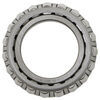

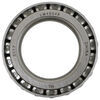
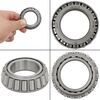

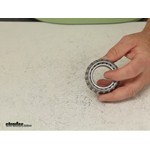




















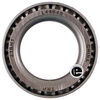
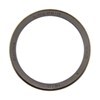
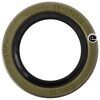


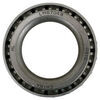


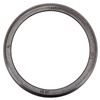














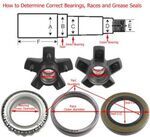
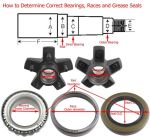


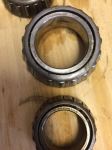
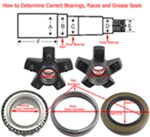
Thank you! Your comment has been submitted successfully. You should be able to view your question/comment here within a few days.
Error submitting comment. Please try again momentarily.